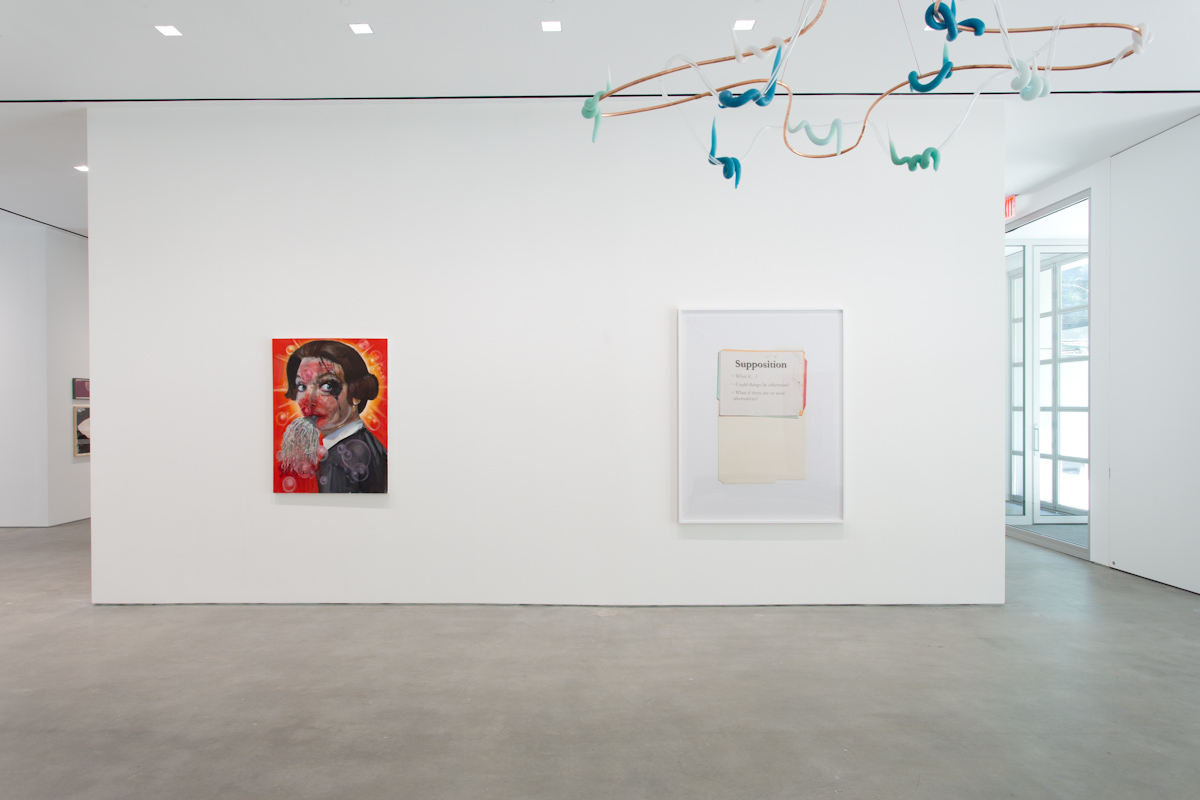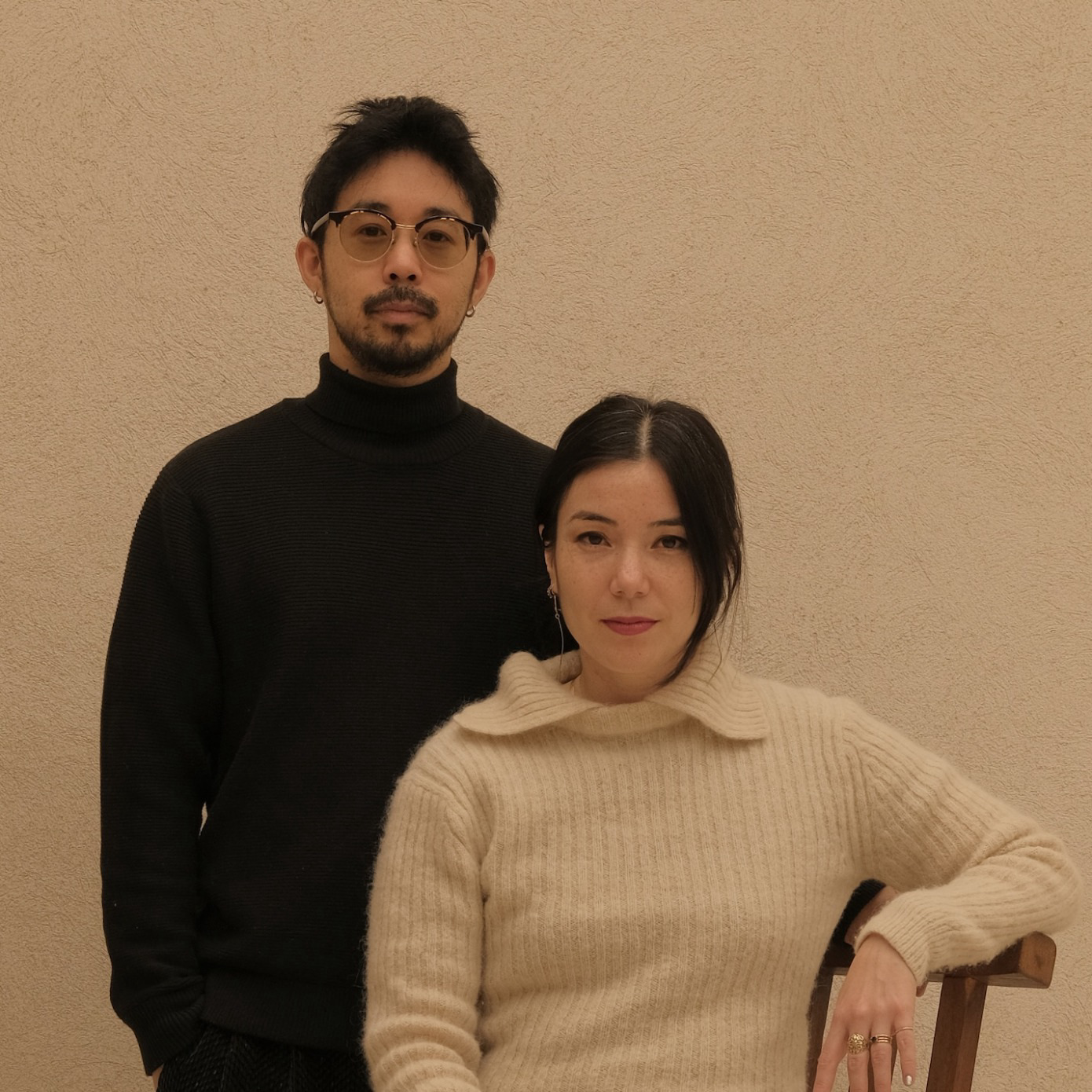
In Maggie Nelson’s genre-indifferent memoir, "The Argonauts," the poet describes the practice of her partner, multidisciplinary artist Harry Dodge, as “making the brutal tender.” This same phrase comes to mind when thinking about Gladstone Gallery’s summer group show,“Lyric on a Battlefield," curated by the gallery’s Director of Artist Relations, Miciah Hussey.
Moonlighting as curator is just one of Hussey’s many creative pursuits, which include a Ph.D. in Victorian literature. “I like to cross lines, skid off expected trajectories,” Hussey says. This is something he shares with the quietly subversive group of artists participating in “Lyric on a Battlefield.” Works such as Kandis Williams’s shrine-like Cervical Smile (2016), which appears to portray “ideal femininity,” but quickly gives way a violent repetition. The female images on the mirrored surface never quite line-up for the viewer but are perpetually off-kilter from any angle. There is beauty to the in-between spaces that Williams and the artists of Lyric create.
Recently, Hussey spoke with Cultured about his current show, his unconventional career path in the arts and the type of work he responds to in this politically fraught moment.

“Lyric on a Battlefield” takes its name from a line in poem by Adrienne Rich, specifically “No one writes lyric on a battlefield.” I’m curious about the language surrounding the exhibition. Titles are always so hard... my knee jerk reaction is always to be punny, but that wasn't apt for this show. Rather, as I had been reading a lot of poetry recently: Lucie Brock Broido, M. NourbeSe Philip, Emily Dickinson. I came upon Rich's poem in the new volume of her collected works. First, I was struck by the urgent beauty in those lines, and then I realized that was what my show was asserting: in our fraught violent political and social climate, maybe we must assert the lyrical—that subjective account of one's own experience—as something we must contend with as we seek political and ethical justice.
We spoke about the pressure to embody a polarized identity right now. How does “Lyric on a Battlefield” navigate that experience? Well, everything is a battlefield—a site of conflict, action, resolution. These battle lines intersect our desires, our connection to the environment, our social relations of race, class and gender. We, or perhaps I should say I, feel compelled to take a side, but often I find the most idiosyncratic and personal modes of my being do not fit neatly into these imposed binaries, or exist in some other field, elsewhere. When the stakes for political and social visibility and agency are pitched so high, as they are now, it feels urgent to align with a group—and forming these alliances are nurturing and beneficial for progress. However, we all must take stock that even the most unified political movement contains Whitman-esque multitudes. I guess my show is a reminder of the power of the personal and the heterogeneous.

I wanted to ask about gender in this show. Many of the artists are women... Gender and queer visibility are important to me, but when thinking about the artists for this show—the work that was exciting me and those artists who I thought would kindle interesting visual conversations—I followed my eye. I have always responded to the work of women, and I think that's what you see in this show. I didn't set out to put together a show of all women, but in its coming together that's who most of the artists are.
You curated a show last year at Bridget Donahue called “On Empathy;” and your writing on this exhibition seeks a similar experience for the viewer. Do you find you have a thread that carries from project to project? There is definitely a thread between the two shows, as there is a connection between my work in contemporary art and my academic research. How to represent the interior lives of others—whether in art or literature—is a primary concern of mine. How aspects of form, affect, and relationality play out as modes of self-knowledge and fostering ethical understanding is not an exhausted inquiry. Art as a function of lived experience ties everything together, for me at least.

One of the works that particularly moved me was the photograph called Rapunzel by Senga Nengudi, also on view in the "We Wanted A Revolution: Black Radical Women 1965-1985" at the Brooklyn Museum. Rapunzel is also the only work that was not produced in the last few years, but in 1981, I was interested in how this particular piece fit into the show? In organizing these shows, I am particularly excited by placing works and artists of different contexts together. Although much of the work in the show has been made in the past few years, they represent practices that have developed over years (even for the younger artists). I was drawn to Nengudi because of her investment in form as in active intersection with the body. This piece in the show excited me because of the intervention of abstract sculptural form in an environment that appears to be falling apart. It struck me as the perfect sign for what the show engages--exploring new narratives while working within a matrix bearing the pressures of constructed systemic forces.
Lastly, you mentioned being with Gladstone Gallery since 2003. How has being at the gallery for such a sustained part of your life has shaped your creative practice, the way you think, etc.? I began working at Gladstone in 2003—I was 24 years old—and it was an incredible experience to work with living artists and learn about the art world from Barbara [Gladstone]. Gladstone shaped my creative practice—which is really just a way of looking and thinking and feeling as much as anything else—because Barbara, the artists I worked with and my colleagues there have been and still are so supportive.
I left Gladstone in 2010 to get my Ph.D. in nineteenth century literature, but art remained close to my heart and my thinking. When I completed my degree, I spoke to Barbara and she came up with a position at the gallery that lets me do everything I want—work with artists, teach, and write. It is an incredible opportunity. I remember a conversation I had with her years ago—after I left and when I was in the middle of my dissertation and grappling with how it would all play out. She said, if you don't see the thing you want to do in the world, make it for yourself. So, that's what I'm doing—and that's really possible because of Barbara and her generous vision.




